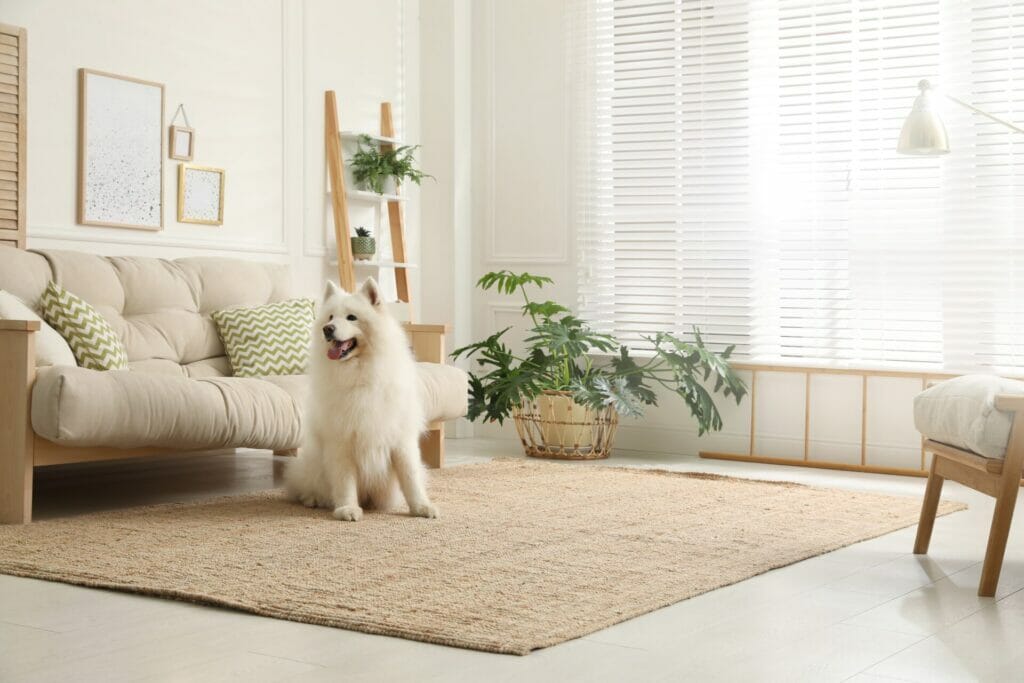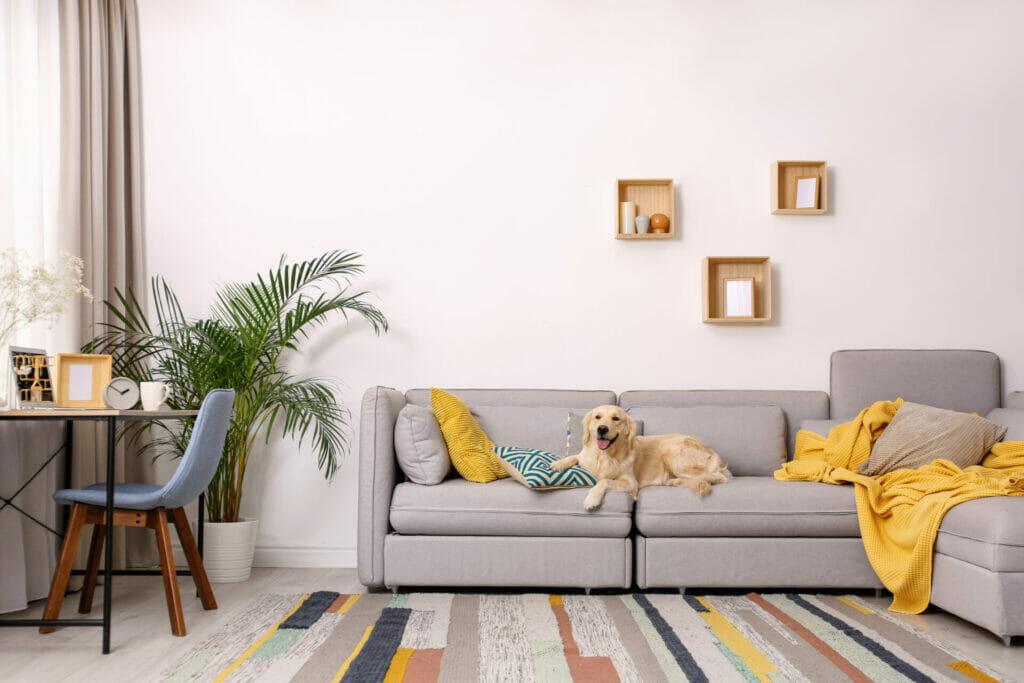If you have a dog, you’ll want to make your home as dog-friendly as possible. This helps your dog to feel at home in your house and can help to reduce conflict between you and your dog. A dog-friendly house is set up to be as safe and comfortable as possible. As you create a dog-friendly house, you’ll want to look at your home through your dog’s eyes and figure out what they need to be safe and comfortable. In addition to ensuring your dog has access to basic supplies like water bowls and food dishes, there are a variety of ways you can adjust the setup of your home to make a house more dog friendly.
Create Dog-Proofed Areas:
The goal of creating a dog-friendly home is to set the house up to be safe for your dog. Go through your entire house or the areas where your dog will spend most of their time and move things that could harm your dog. The goal is to remove or put out of reach any objects that your dog could chew or eat that could cause injury, including electrical cords and choking hazards.
You’ll also want to move fragile objects from the floor or low shelves where your dog could accidentally knock them over. The goal is to create a home environment where your dog can freely move around and engage with their environment without being at risk of knocking things over or having access to objects they could chew.
Add Non-Skid Flooring:
When creating a dog-friendly home, consider the flooring that you have in the home. If you have hardwood floors, tile, or linoleum, that flooring might be easy to clean, but it’s difficult for dogs to move around. When dogs walk, run, and play on hard floors, they can slip easily. Slipping on the flooring is uncomfortable for dogs and can aggravate conditions like arthritis. If you have hard floors in your house, consider adding area rugs or carpet runners to help your dog to have traction while they move around.

Add Supports:
If you have a small dog or a dog of any size who is struggling with mobility, add in furniture stairs to your couches, chairs, and beds. This helps give your dog a safer way to get on and off furniture when they want to. This can help prevent your dog from injuring or straining their limbs, aggravating arthritis, or straining their back, neck, or other joints by jumping on and off.
Create Private Space:
Even the most social dogs can get stressed and overwhelmed in a busy home. While creating a dog-friendly house, consider giving your dog their own space to retreat when they need a nap or break. Depending on your dog’s preferences, this private area could be a dog bed, a dog crate, a spare bedroom, or another area where your dog can retreat to. Tell visitors and family members that when your dog is in their private space, they shouldn’t be disturbed. In your dog’s private area, ensure they have a comfortable place to sleep, water to drink, and toys to play with.
Enrichment Opportunities
An ideal dog-friendly house is going to have plenty of readily accessible enrichment opportunities for your dog. These can be things your dog needs beyond their necessities, like water. Enrichment ideas for your dog include making sure your dog has access to plenty of toys and dog-safe chews or a kong with their favorite food. Dogs with plenty of access to toys and activities are less likely to become bored and destructive.
Manage Space:
If there are places in the house that aren’t dog-proofed, or you don’t want your dog to access without, you use barriers to manage different spaces in your home. This will allow your dog to move freely in other areas of the home but to stay away from places that could be harmful. Baby gates and other barriers can block stairs if you have a young puppy or dog who can’t safely navigate the stairs independently.
The use of baby gates and barriers helps to keep your dog where you want them to be and sets your dog up for success by keeping them away from areas that could be harmful. Not only does this help to keep your dog safe, but it also reduces conflict between you and your dog, as you don’t need to constantly call your dog away from areas of the house where you wouldn’t want them.




















